
⏰ TL;DR
|
'Why are we spending so much on ads, but no one is signing up for the trial?'
'Our product is clearly better, so why can’t we get visitors to understand its value in 5 seconds?'
'How do our competitors make their landing pages look so simple and compelling, while ours feel cluttered?'
If these questions sound familiar, you’re not alone. They point to a common, costly gap: a disconnect between your product’s potential and how you present it to a single, focused visitor.
A SaaS landing page isn’t just a webpage; it’s your most critical salesperson, working 24/7. When it fails to instantly communicate core value, speak directly to a specific pain point, and guide a visitor to one clear action, you’re not just losing conversions, you’re wasting every dollar of your marketing spend.
Now this is not about design trends; it's about a system that doesn't align with how modern buyers decide. They arrive skeptical, distracted, and quick to judge. Your page has milliseconds to prove relevance and minutes to build enough trust for a commitment.
This blog solves that. We’ve dissected 20 of the best SaaS landing pages in the market, breaking down exactly why their copy, layout, and psychology convert strangers into users. You’ll get a complete, end-to-end guide alongside a detailed breakdown of the best SaaS landing page examples 2026, so you can diagnose your page’s weak spots and rebuild it for performance.
What is a SaaS landing page?
A SaaS landing page is a standalone web page, distinct from your main website, designed with a single, focused objective: to convert a visitor who arrived from a specific marketing campaign into a lead or customer.
Its entire existence is justified by one goal. Every headline, image, sentence, and button is meticulously crafted to eliminate distractions, overcome objections, and persuade the visitor to take that one action: be it signing up for a free trial, booking a demo, or subscribing to a list.
Let’s look at a masterclass in clarity. ClickUp, a productivity platform, uses its primary landing page not just as a homepage, but as a high-converting gateway. Scanning their page reveals several winning tactics:
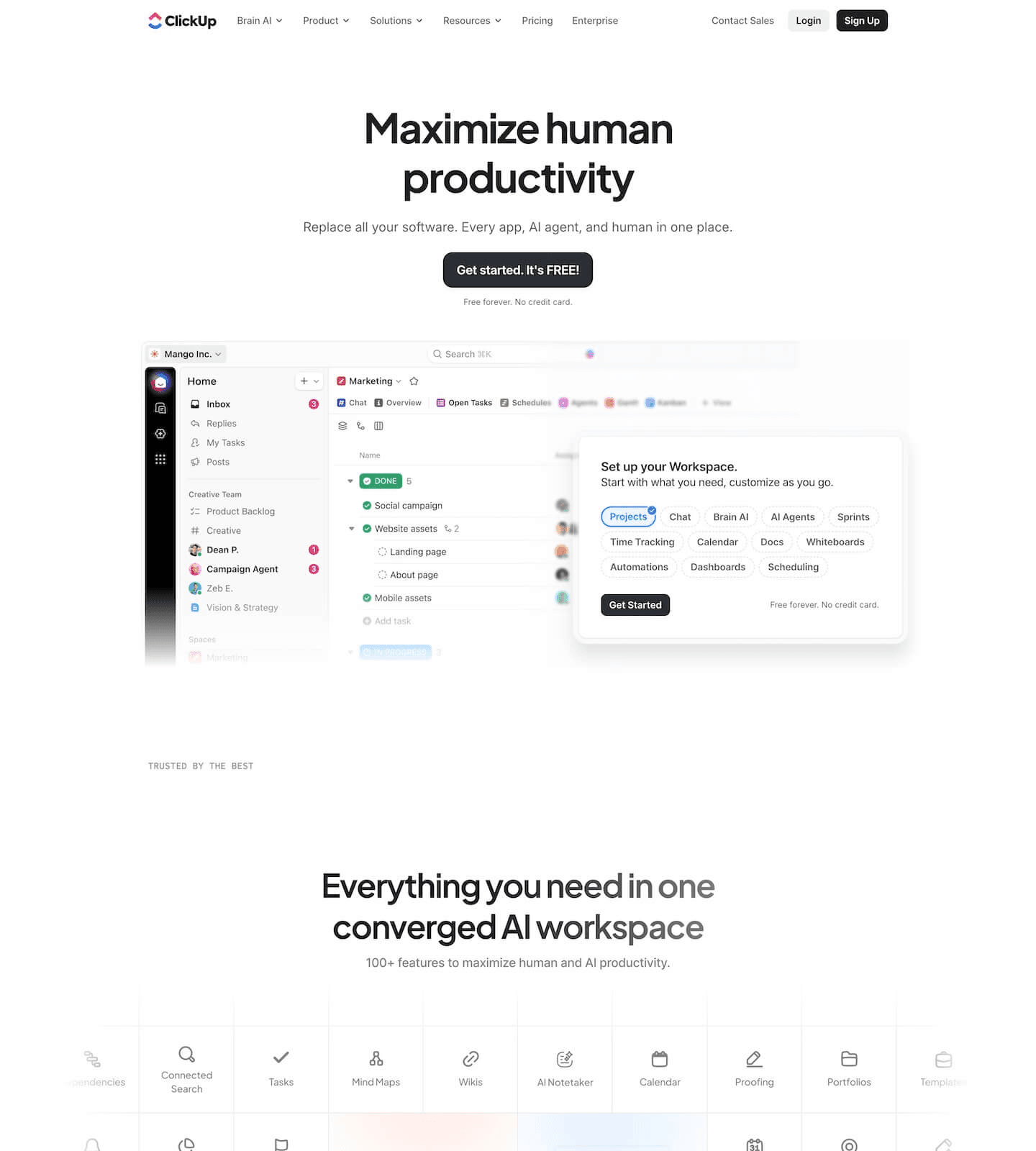
Headline that hooks fast: 'Maximize human productivity' is bold, emotional, and aspirational. It doesn’t describe software; it promises a result. In seconds, you know what they offer and the problem they solve.
Clear supporting message: The subheading, 'Replace all your software…' simplifies the product story. It removes confusion and answers: Why choose this?
Friction-free CTA: 'Get started. It’s FREE!' plus 'No credit card' removes hesitation. It feels safe and quick to try.
Proof-based micro-copy: The line 'Get 400% more done' adds urgency and credibility without long explanations.
This page works because it respects the visitor’s time, proves authority quickly, and makes the next step obvious and appealing. It’s a focused engine for user acquisition.
What are the key components of a SaaS landing page?
Each SaaS landing page component is a cog in your conversion machine. When they work in sync and harmony, the machine delivers. But when one fails, the whole system underperforms.
Let’s break down the non-negotiables.
The headline and sub-headline
This is your first and most important impression. Data from the Nielsen Norman Group shows users often leave a page in 10-20 seconds, but a compelling value proposition can hold them longer.
What it does: Grabs attention and states the core benefit.
Actionable Tip: Use the 'What-Why-How' formula. What you get, Why it matters, How it works. Example: 'Ship code faster' (What) / 'by automating your dev pipeline' (How) / 'so your team can focus on building' (Why).
The hero section (with supporting visual)
This is the headline’s partner. It typically includes a key graphic, video, or interactive demo.
What it does: Provides visual proof and reinforces the headline promise.
Actionable Tip: Show the outcome, not just the interface. Instead of a generic dashboard, show a graph soaring upward, a calendar magically clearing, or a workflow completing automatically.
The primary CTA (Call-to-Action)
This is the goal of the entire page. Data consistently shows that CTA button copy and design are among the top elements that impact conversion rates.
What it does: Directs the user to the single action you want them to take.
Actionable Wording Strategies:
Use action-first, benefit-implicit verbs: 'Start My Free Trial,' 'Get My Proposal,' 'Unlock My Report.'
Create urgency or scarcity (ethically): 'Start Free Trial (No Credit Card),' 'Book Your Spot,' 'Join the Waitlist.'
Avoid passive words: Avoid words like 'Submit.' It sounds bureaucratic. 'Sign Up' is okay, but 'Get Started' is better because it focuses on the user’s journey.
Benefit-oriented features (The 'What’s in it for me?' section)
Users don’t buy features; they buy solutions to problems.
What it does: Translates product capabilities into tangible user outcomes.
Actionable Tip: Use the 'Feature → Advantage → Benefit' (FAB) model. Don’t say 'AI-powered analytics' (Feature). Say 'See instant insights' (Advantage), so you can make data-driven decisions before your next meeting (Benefit).
Social proof and trust signals
This is the psychological lubricant that reduces friction. A BrightLocal survey found that 79% of consumers trust online reviews as much as personal recommendations.
What it does: Leverages the principle of social validation to build credibility.
Actionable Forms:
Logo parade: 'Trusted by [Google, Airbnb, Shopify].'
Customer testimonials: Use real names, video testimonials, photos, and companies.
Case study results: 'How [Company X] increased revenue by 150%.'
Star ratings and review aggregates: 'Rated 4.8/5 on G2.'
Clear, simple pricing section
Pricing confusion is a top conversion killer, and SaaS landing pages are notorious for hiding their pricing. Pricing secrecy can do more harm than good.
What it does: Removes final uncertainty and allows self-qualification.
Actionable Tip: Use a tiered model (Basic, Pro, Enterprise) with the recommended plan highlighted. Always include a 'Free Trial' or 'Free Plan' option if your model allows. State billing terms clearly (monthly/annual).
Frequently Asked Questions (FAQ)
An often-overlooked conversion powerhouse, FAQs can help instantly with doubts and common fears.
What it does: Addresses final objections directly on the page, preventing support tickets and abandoned forms.
Actionable Tip: Base FAQs on real sales/support conversations. Common SaaS FAQs: 'Can I cancel anytime?' 'Is there a long-term contract?' 'How do you handle data security?' 'Which integrations do you offer?'
A final, reiterated CTA
The journey’s end should loop back to the beginning.
What it does: Captures users who have scrolled through all the information and are now ready to act.
Actionable Tip: This final CTA can be more direct. After educating them, you can use stronger language like, 'Ready to transform your workflow? Start your free trial now.'
What Are the Purposes of a SaaS Landing Page?
A SaaS landing page has one job: to turn a visitor into a conversion. But 'conversion' means different things depending on your product, price, and audience.
Your page's purpose must match the specific action you need a visitor to take. Here, we break down the most common conversion purposes:
Securing a free trial or freemium sign-up
This is the most direct conversion for self-service SaaS products. The goal is low-friction user acquisition. Your page must convince someone to try the product with minimal commitment.
Page goal: Remove every barrier to creating an account.
Best for: Product-led growth models where the software itself is the best salesperson. Think project management, design, or communication tools (e.g., Trello, Figma, Slack).
Generating a qualified demo request
For high-ticket, complex, or enterprise SaaS, a demo is the essential first step. The purpose shifts from instant activation to lead qualification.
Page goal: Attract the right-fit buyer and schedule a sales conversation.
Industry example (EdTech): An enterprise learning platform wouldn't ideally offer a free trial to a university. Their landing page would target administrators with messaging about improving student outcomes and include a demo request form to discuss integration and scale.
Building an email list for nurture
Sometimes, a visitor isn't ready to buy or try. The purpose is to capture their interest for future education and marketing.
Page goal: Exchange valuable information for contact details.
Best for: Top-of-funnel content used in inbound marketing campaigns. Here, the landing page is a gateway to a nurture sequence, not a direct sales tool.
Driving paid plan activation or upgrade
These pages target existing users or visitors already aware of the product, pushing them to commit to a paid tier.
Page goal: Convince users of the higher value in a paid plan.
Best for: Converting free users or targeting visitors searching for 'premium' solutions in your category.
Onboarding a specific user segment
A landing page can serve as a dedicated entry point for a niche audience, with messaging tailored just for them.
Page goal: Make a distinct user group feel the product was built for them.
Best for: Products that serve multiple verticals (e.g., a CRM for real estate agents, a project tool for marketing agencies).
Always remember: The purpose dictates the design.
A page built for a quick sign-up will fail at generating high-quality demos, and vice versa.
Before you write a single headline, you must answer: What is the one action I need from the person clicking on this ad?
Your entire page is the answer to that question.
20 Best SaaS Landing Page Examples That Convert
Below is our curated list of 20 best SaaS landing page examples that excel at applying the principles above. Study their structure, copy, and flow.
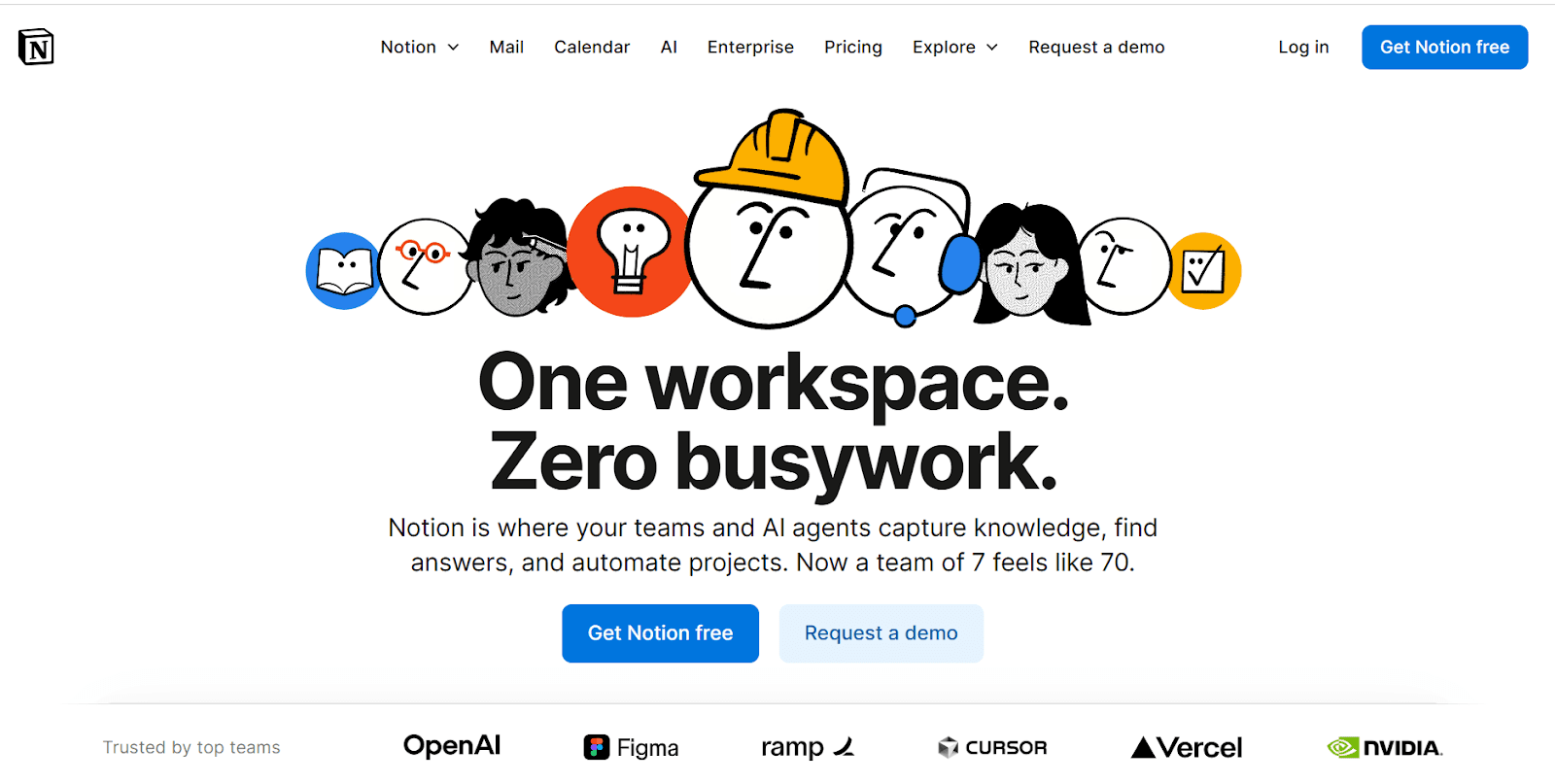
Notion’s landing page nails clarity. The headline (one workspace. zero busywork.) quite nicely nails the intent of the product. Next, the subheadline in simple terms explains what the product does alongside the benefit (team of 7 feels like 70).
The UI is fun with emojis, and small trust cues like customer logos of companies like OpenAI, Figma add solid weight.
What works:
Cool and confident headline
Simple and quirky design
Trust signals without clutter
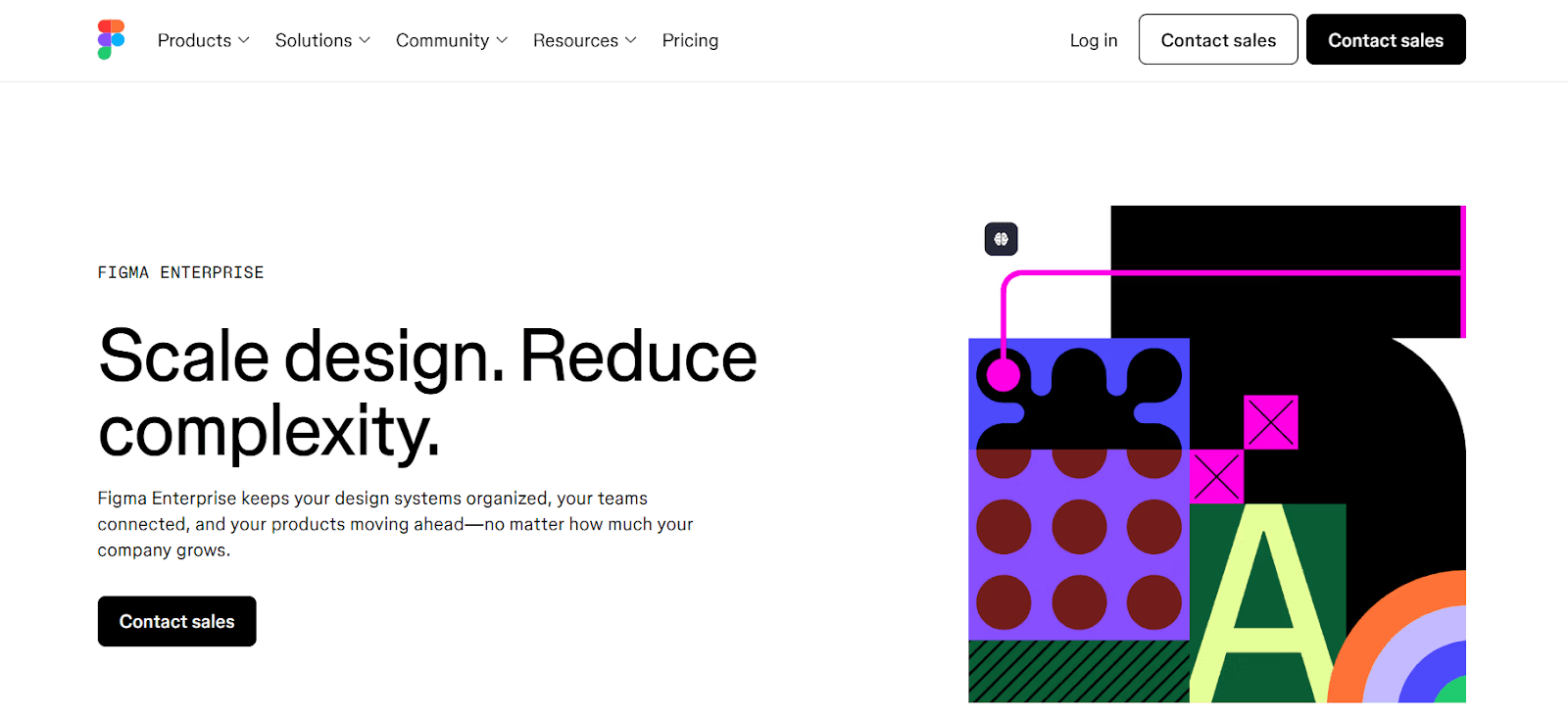
Figma’s enterprise landing page feels fast, collaborative, and made for design teams, and that’s the whole point. The headline is extremely directly targeting ICP pain points and smartly presents the solution as well (Scale design, reduce complexity).
The layout is clean, the palette is consistent. Nothing feels complicated, and the tone stays friendly and confident.
What works:
The headline is direct without any complex wording
Image designing sits well with the overall intent of the product
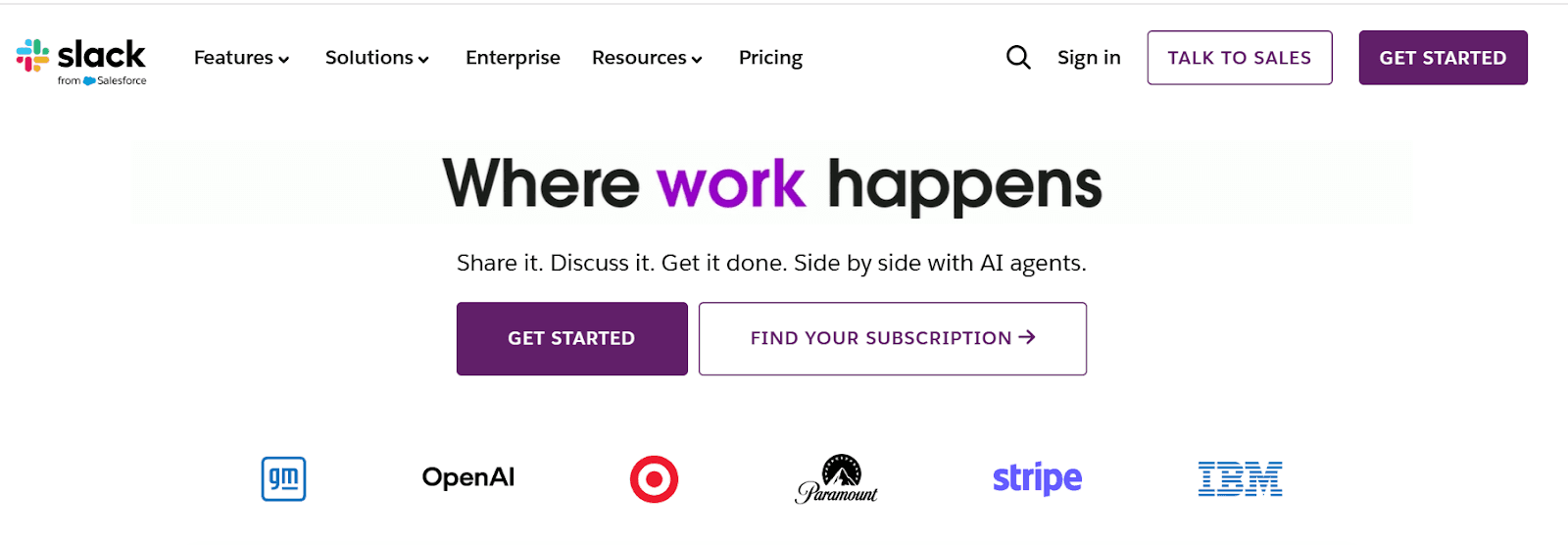
Slack’s landing page gets to the point quickly: it’s built for teams who want faster internal communication. The tone is practical and confident, not pushy. The design is clean, and visuals show channels, huddles, and workflows instead of generic stock images. It feels familiar and easy.
The client list, which boasts OpenAI, IBM, and Stripe, adds positive reinforcement.
What works:
Conversation-focused messaging
Real product UI visuals
Simple CTA that reduces thinking
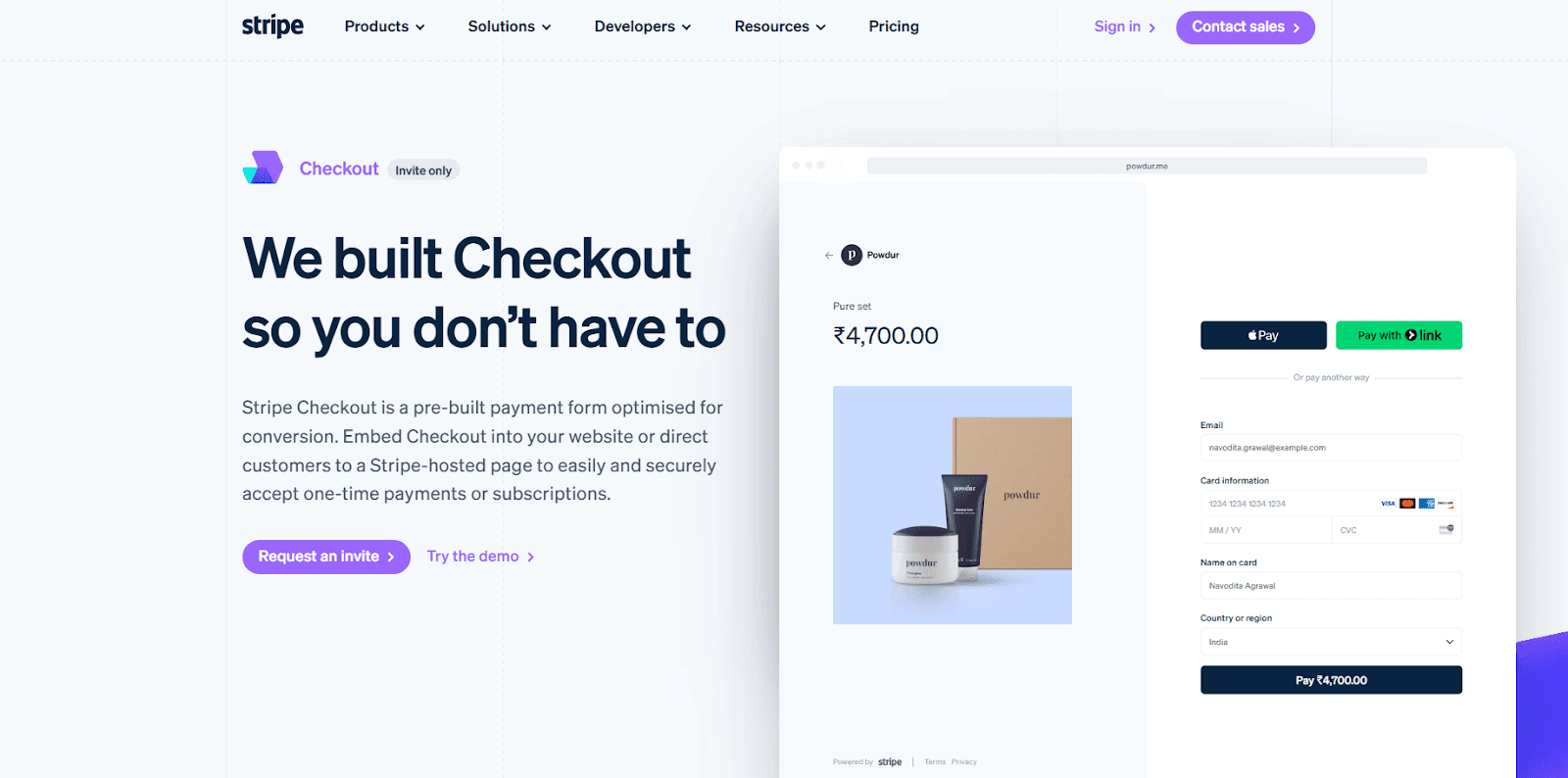
‘We built Checkout so you don’t have to.’
That’s a powerful headline and speaks clearly to founders, engineers, and companies building payment flows.
What follows next is a simple yet solid explanation of the benefit you derive from using Stripe Checkout. The layout is structured, almost modular, which matches the product’s developer-first identity.
What works:
Developer-first messaging
Action CTAs
Attention-grabbing headline and messaging
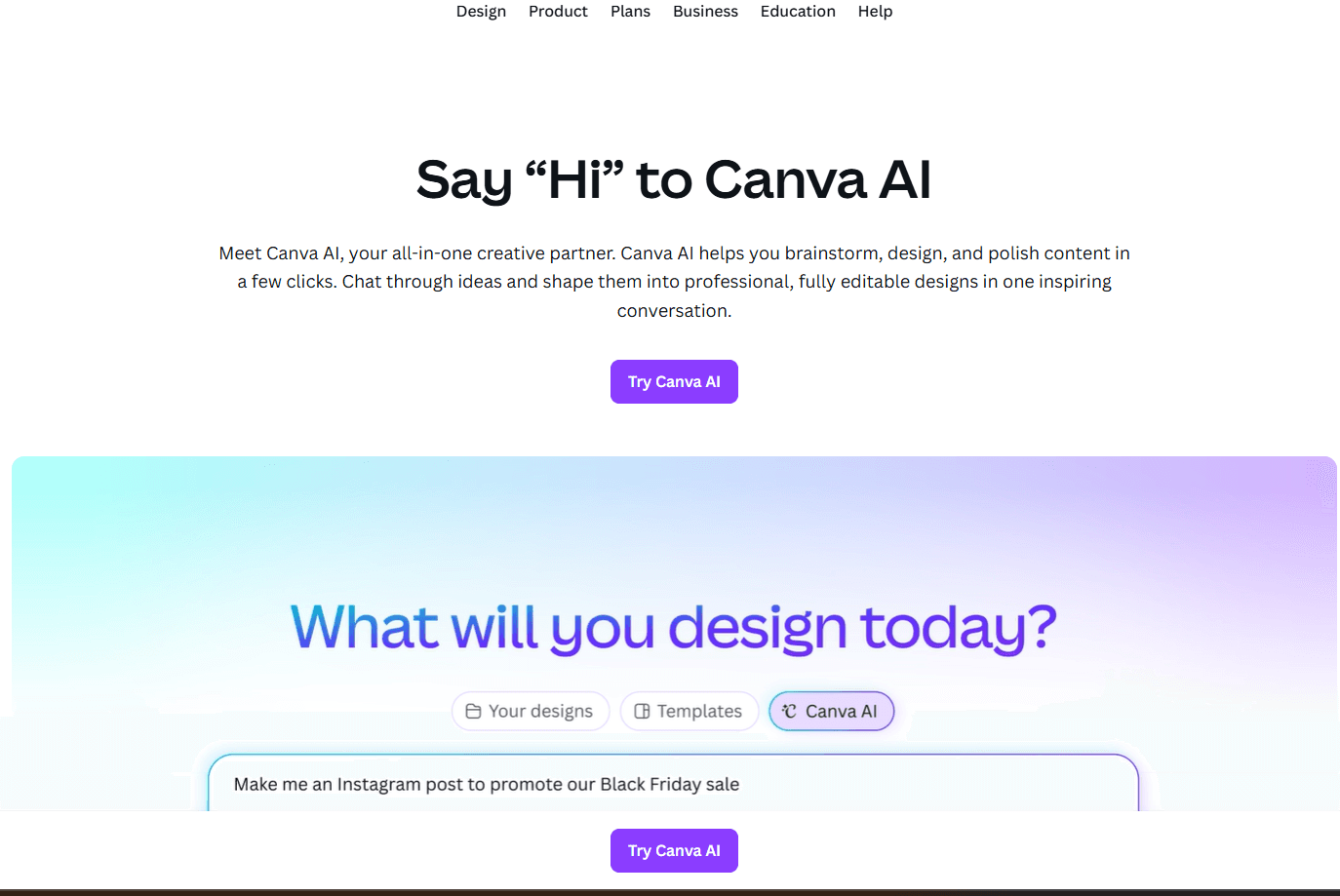
Canva knows its audience, people who want to create designs fast without learning complicated tools. The Canva AI landing page reflects that mindset.
The headline is super casual, and the subtext explains in plain English what the product does. Pay attention to words like ‘few clicks’, ‘professional ‘, and fully editable designs.’ You see how it smartly plays with the wordings here?
The tone is friendly and instructional, and you don’t read your way into Canva; you imagine yourself using it.
What works:
Beginner-friendly tone
Immediate CTA to try
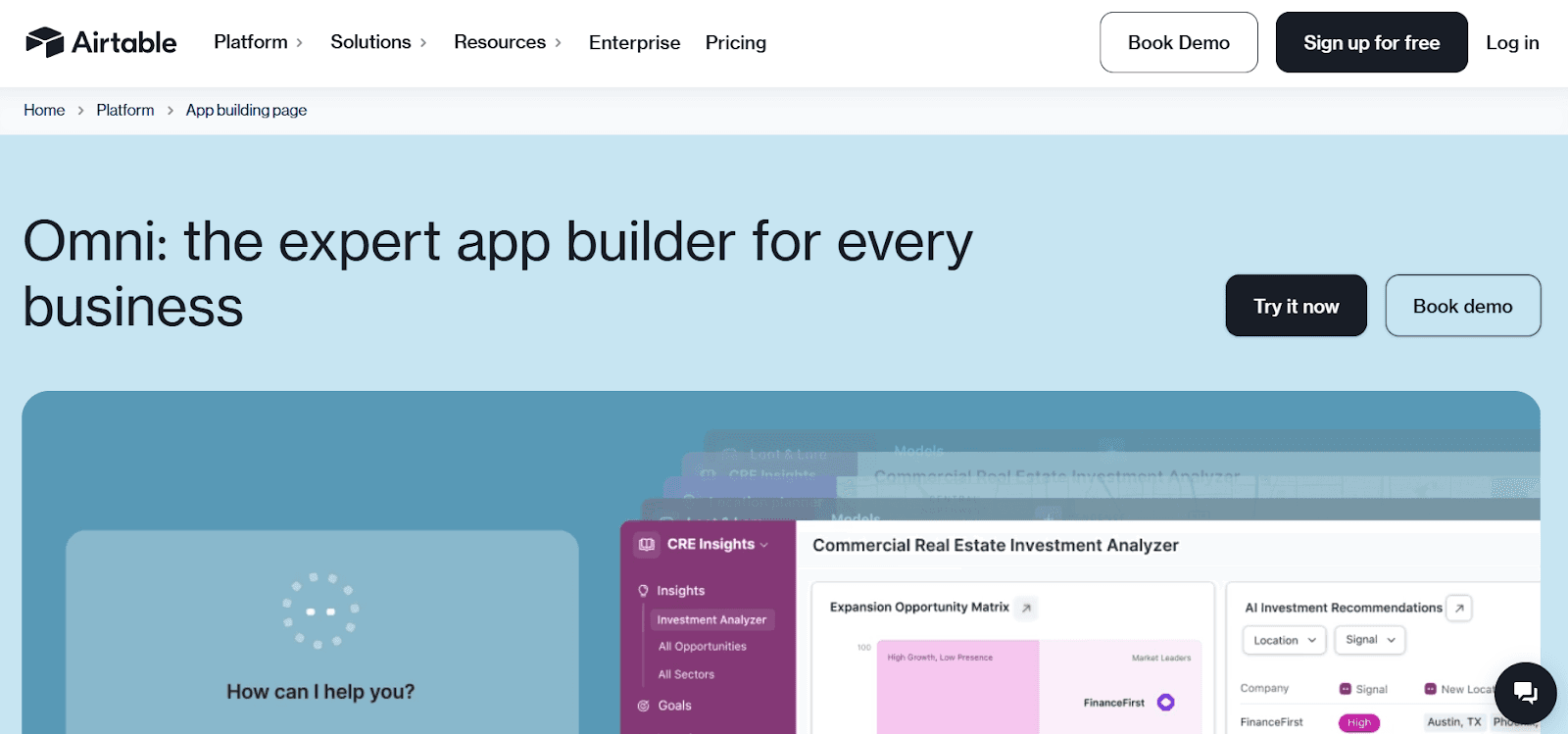
Airtable AI app building platform’s landing page positions the platform for teams who want to build apps without learning how to code. The message is clear: expert app builder for every business, meaning we do all the work for all business types.
The design feels clean and guided, and the CTAs make it easy to book a quick demo.
What works:
Template-first storytelling
Calm design language
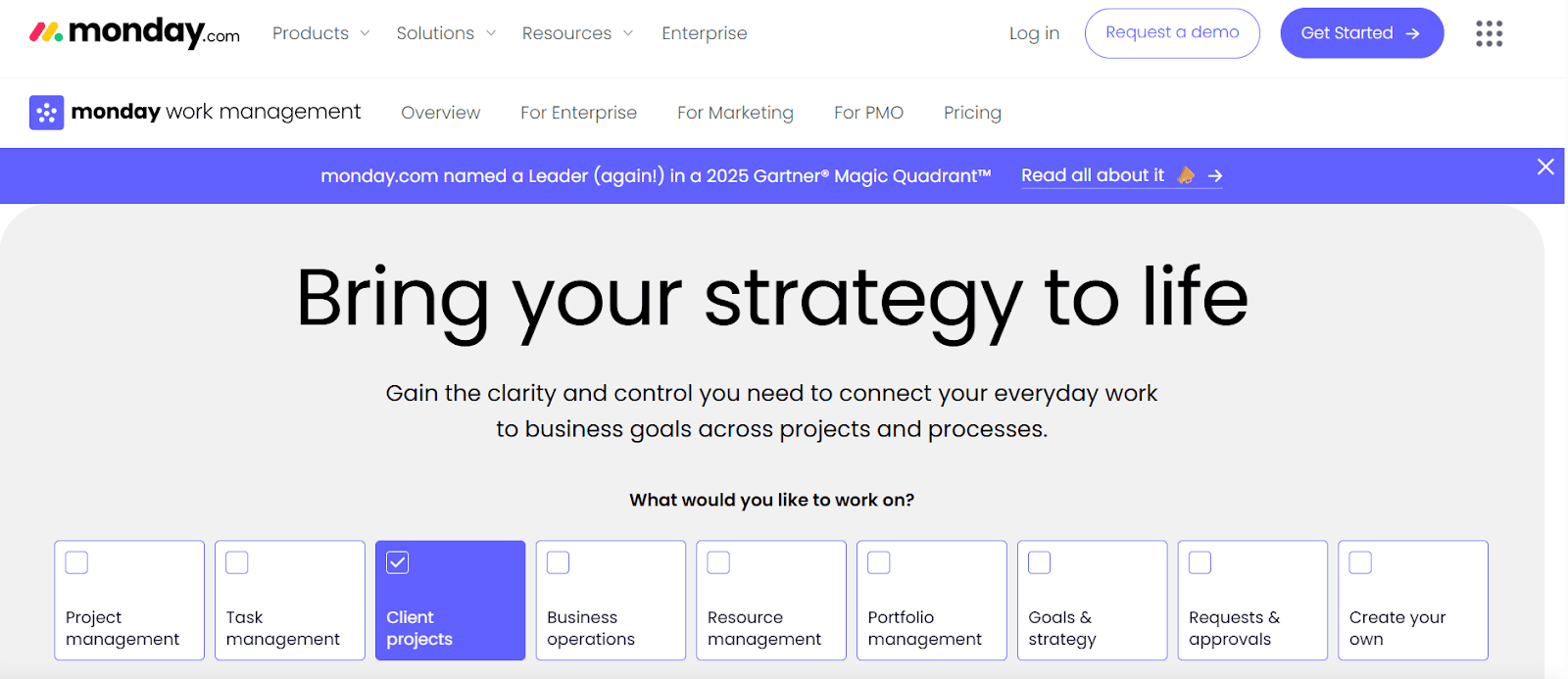
Monday’s work management landing page puts the spotlight on clarity. The headline speaks directly to teams who want better alignment between daily work and bigger company goals. The UI shows different use cases like projects, tasks, and requests, so visitors instantly see how flexible it is.
The language feels practical and encouraging, and you can get started quickly without overthinking setup.
What works:
Multiple use-case entry points
Interesting UI formulation
Strong trial CTA
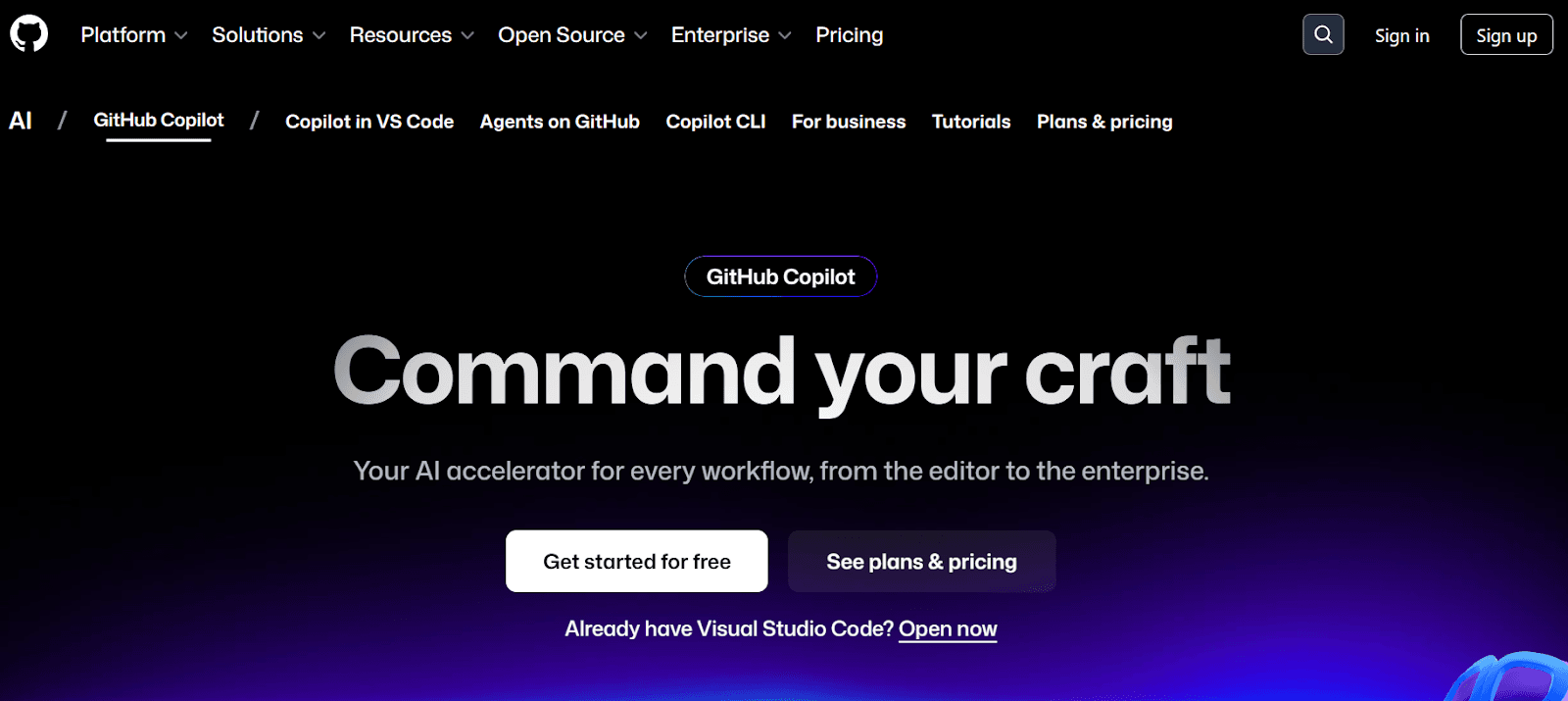
GitHub’s landing page speaks directly to developers and technical teams. The message is short and confident: Copilot helps you write code faster and work smarter.
The design is minimal and clean, letting the product name and AI focus carry the narrative. The CTA gives you two clear tracks: Explore for free or dive deeper into plans, which fit both individual users and teams evaluating adoption.
What works:
Technical but approachable tone
Clear path for developers
Strong product identity
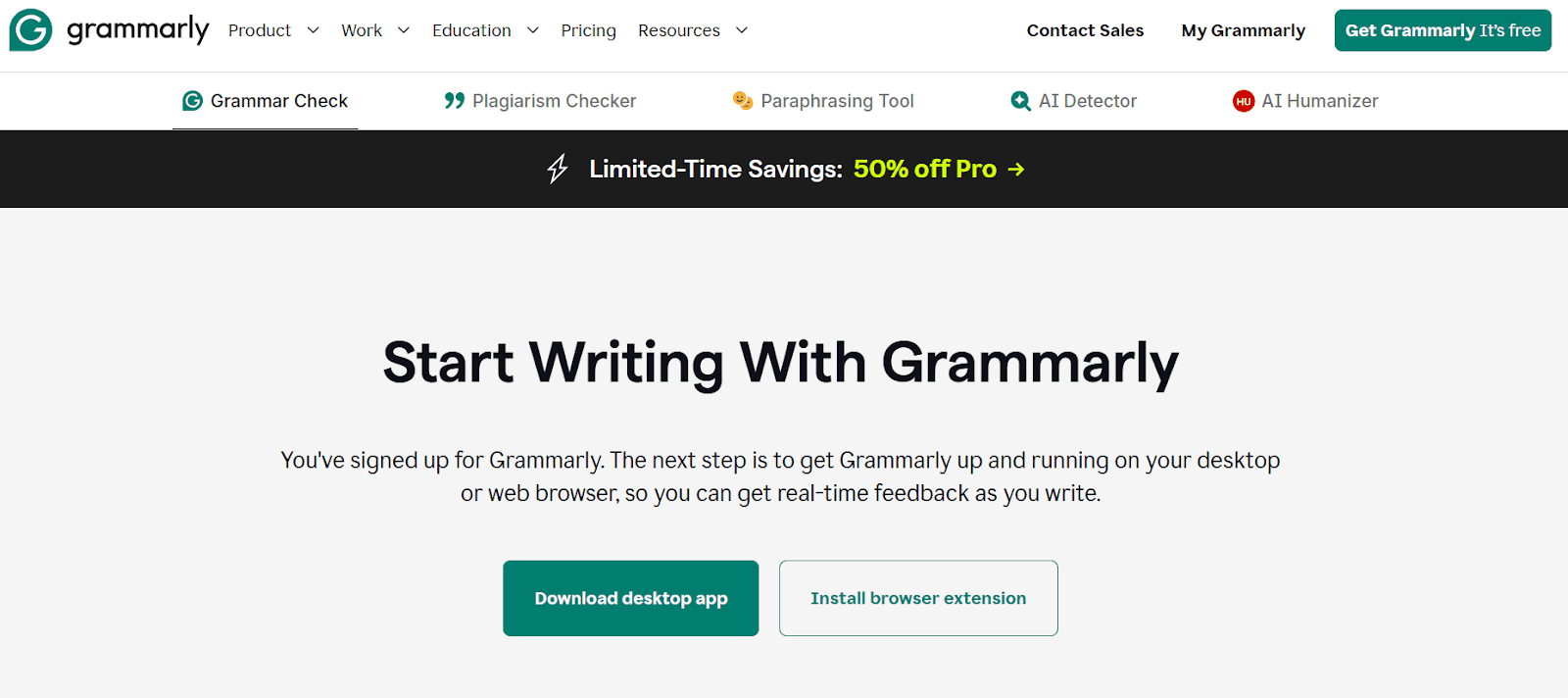
Grammarly keeps this landing experience incredibly simple.
The message is clear: start writing and get feedback instantly. The tone feels helpful, not pushy, and the layout shows you exactly what to do next without overwhelming you with choices.
Slightly unconventional, the page gives two paths: Install on your browser or download the desktop app. It eliminates overthinking (not giving an optional CTA) and makes activation feel easy.
What works:
Clear product promise
Clean and simple headline and design
Absolutely direct CTA without any fluff
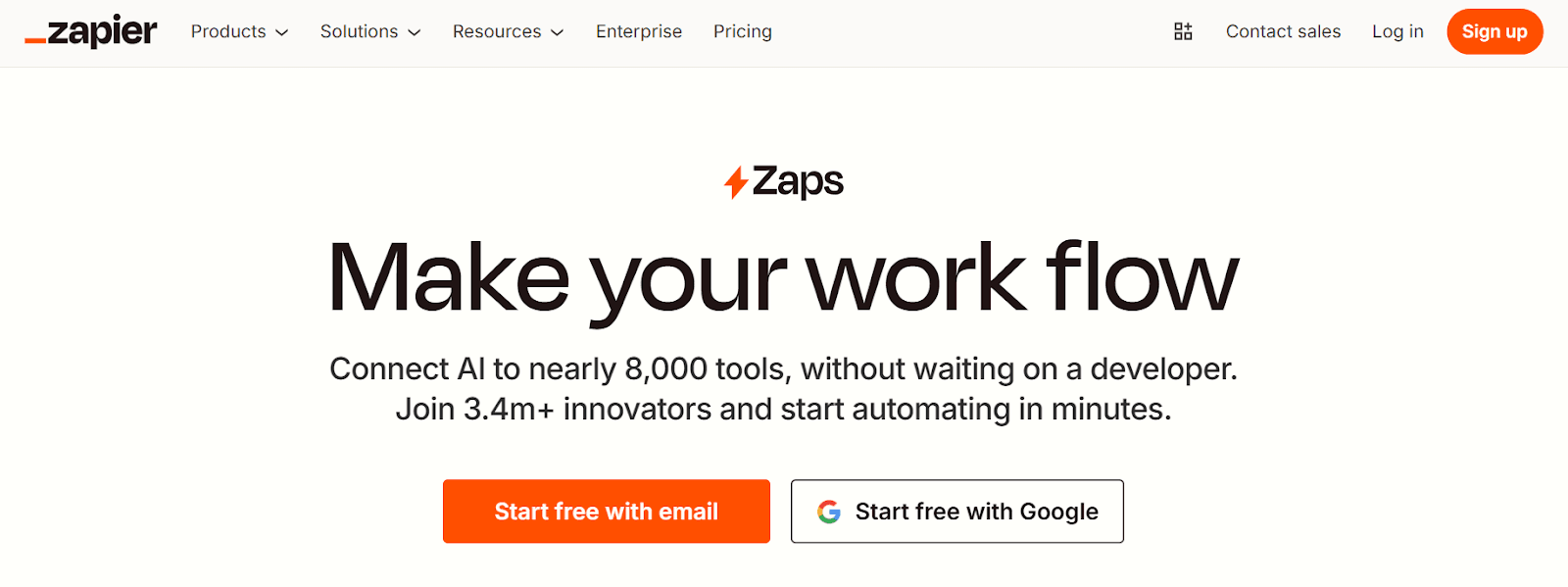
Zapier goes straight into the value: automate your work and move faster.
The headline feels confident and speaks directly to people tired of manual tasks. The messaging highlights how many tools Zapier connects with, which instantly builds trust and relevancy.
The CTA options are simple: Use your email or sign in with Google, and the page encourages action instead of reading long product details.
What works:
Immediate value explanation
Strong credibility via numbers
Fast sign-up options
11. Userpilot
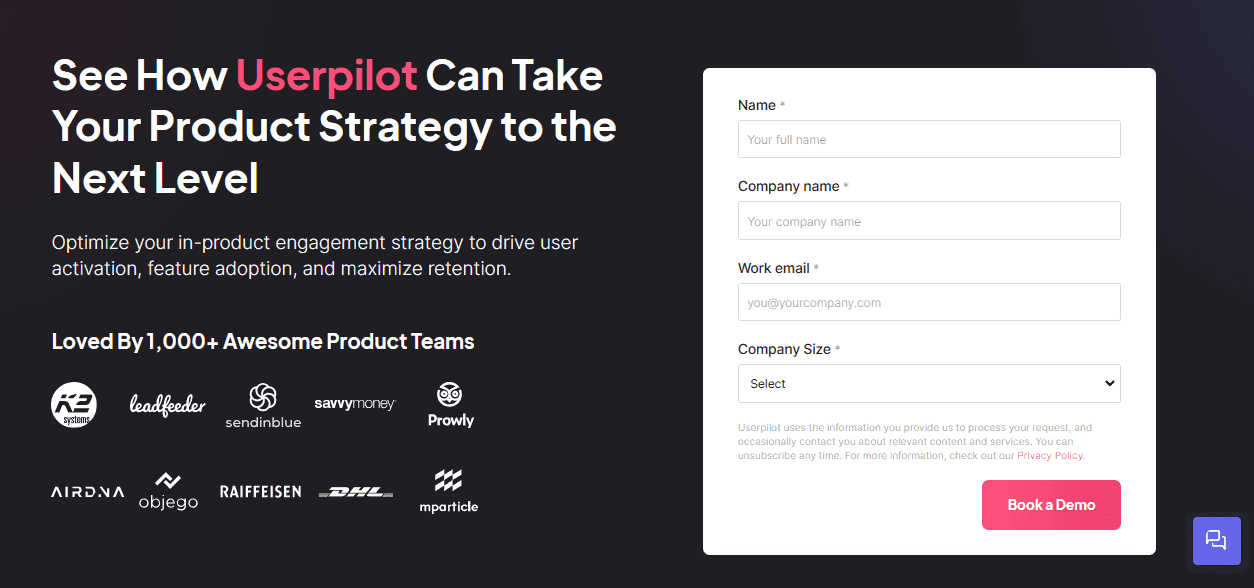
Userpilot’s landing page is built for quick demo intent. The headline gets straight to the value, and the layout keeps things simple with a centered form that asks only what’s needed. Social proof (logos and testimonials) does most of the convincing, while clean design and minimal copy keep friction low. The “Book a Demo” CTA is placed prominently and feels natural for the page’s goal.
What works:
• Short, high-clarity copy
• Prominent demo form that personalizes the experience
• Trust cues from testimonials and client logos
12. Asana
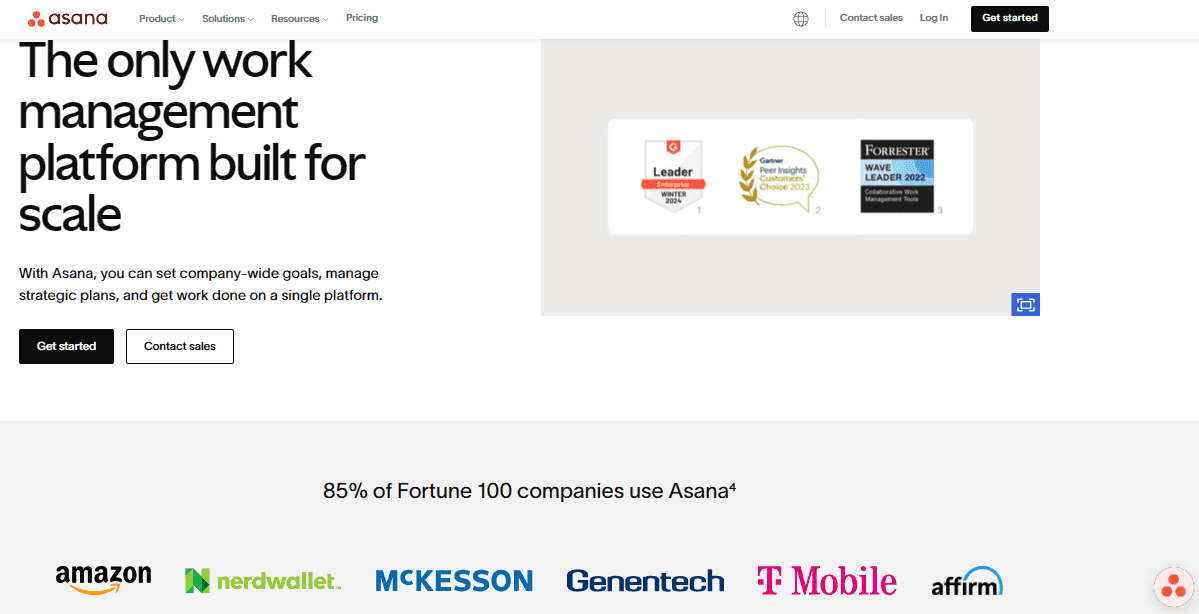
Asana’s landing page thrives on clarity and calm. A clean hero section with black and white CTAs sets the tone, while soft colors and white space keep the focus on the product. Feature blocks with quick, actionable headlines make the scroll feel light. The embedded demo helps visitors see the value instantly.
What works:
• Minimalist hero with bold, clear CTA
• Digestible feature sections with simple headlines
• Demo, FAQs, and chatbot support that guide users smoothly
13. SurveyMonkey
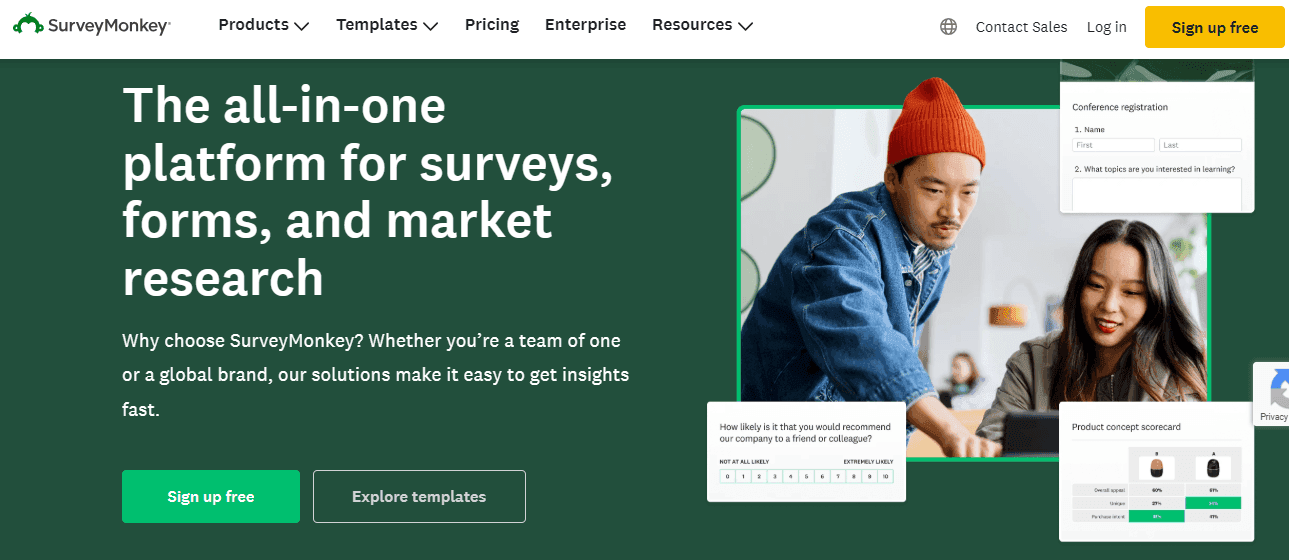
SurveyMonkey keeps things straightforward. The hero section communicates the core benefit in one line, backed by two action-ready CTAs. Feature highlights are laid out in small, icon-led chunks that are easy to skim. Clear navigation and strong trust signals (“300K+ organizations”) make the page feel reliable and easy to evaluate.
What works:
• Pricing visible upfront
• Simple navigation and clean layout
• CTAs placed where decisions naturally happen
14. Trello
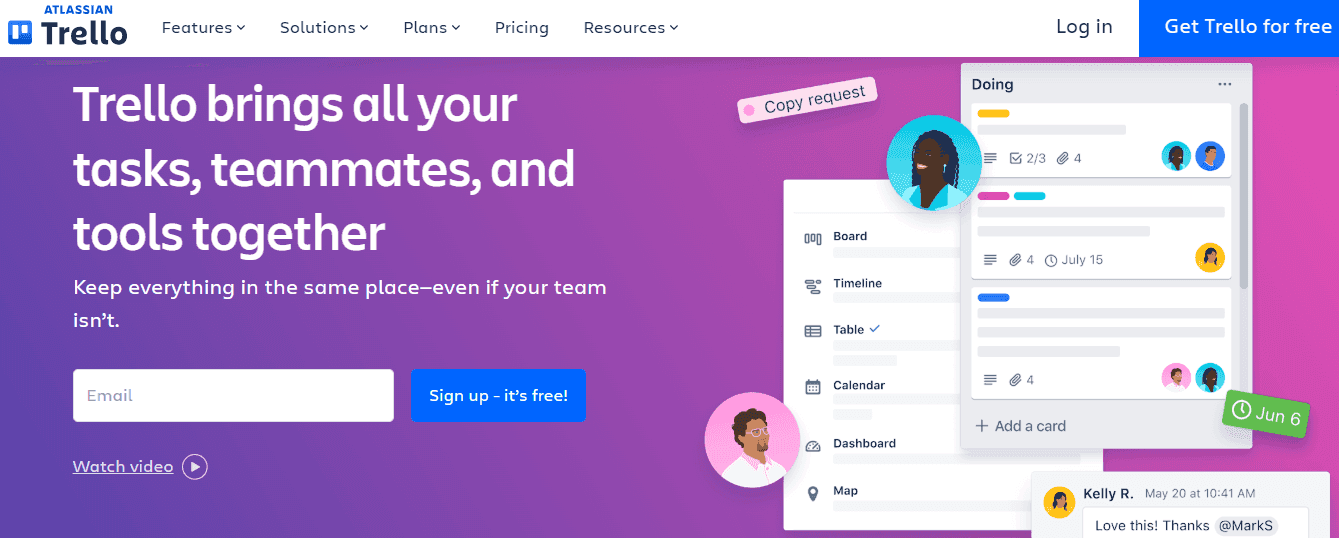
Trello’s landing page mirrors its product philosophy — simple, visual, and organized. A clean hero with a free signup CTA lowers barriers instantly. A short demo video adds clarity without needing heavy copy. Testimonials, logos, and a large community stat reinforce trust, while responsive design keeps it all consistent across devices.
What works:
• Free signup CTA that reduces hesitation
• Clean visuals aligned with the product experience
• Trust signals like testimonials and large userbase stats
15. Shopify
Shopify’s landing page speaks to busy founders. The headline promises speed (“Create a Website in Minutes”) and the CTA pushes visitors straight into a free trial. Feature sections highlight templates, ecommerce tools, and flexibility — supported by interactive visuals that show rather than tell. FAQ and lead form make the path forward crystal clear.
What works:
• Fast, value-first headline
• Free trial form placed for high capture
• Strong SEO intent toward DIY businesses
16. HubSpot
HubSpot’s landing page blends bold design with thoughtful UX. The hero uses color and contrast to pull visitors toward the CTA. Benefits, testimonials, and case studies are woven together to maintain engagement. A short demo video helps bring the platform to life without overwhelming visitors.
What works:
• Smart use of color and layout
• Balanced mix of benefits and social proof
• Demo video to push visitors deeper into the funnel
17. Ahrefs
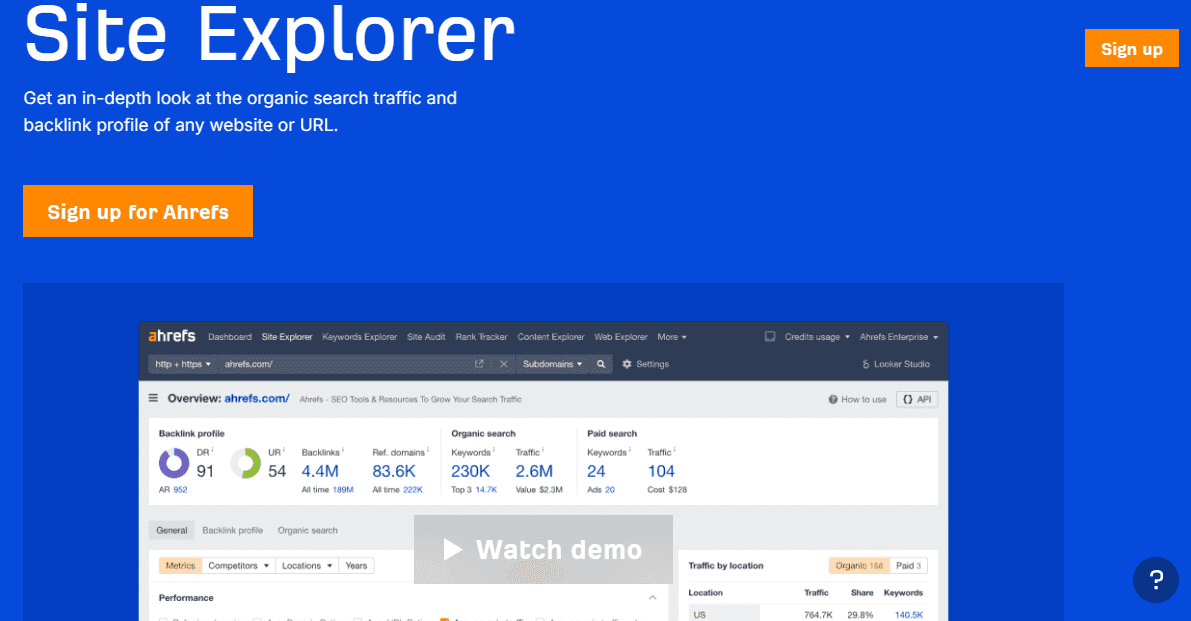
Ahrefs’ Site Explorer page speaks directly to SEO professionals. The subheadline explains its core value instantly, while a live demo section shows real data in action. Key benefits are broken down simply with screenshots, and pricing sits right below for full clarity. The layout is clean, practical, and action-oriented.
What works:
• Interactive demo for hands-on exploration
• Screenshot-led feature explanations
• SEO-focused copy that gets straight to value
18. Bitly
Bitly keeps things sharp and simple. The hero section pairs a clear headline with a high-contrast CTA to drive action. Benefits are broken down cleanly, and brand logos strengthen credibility. Scrolling ends with another CTA, nudging users to sign up before bouncing.
What works:
• Strong visual hierarchy with clear CTAs
• Trust elements from client logos
• Benefit-led messaging for quick understanding
19. ZoomInfo
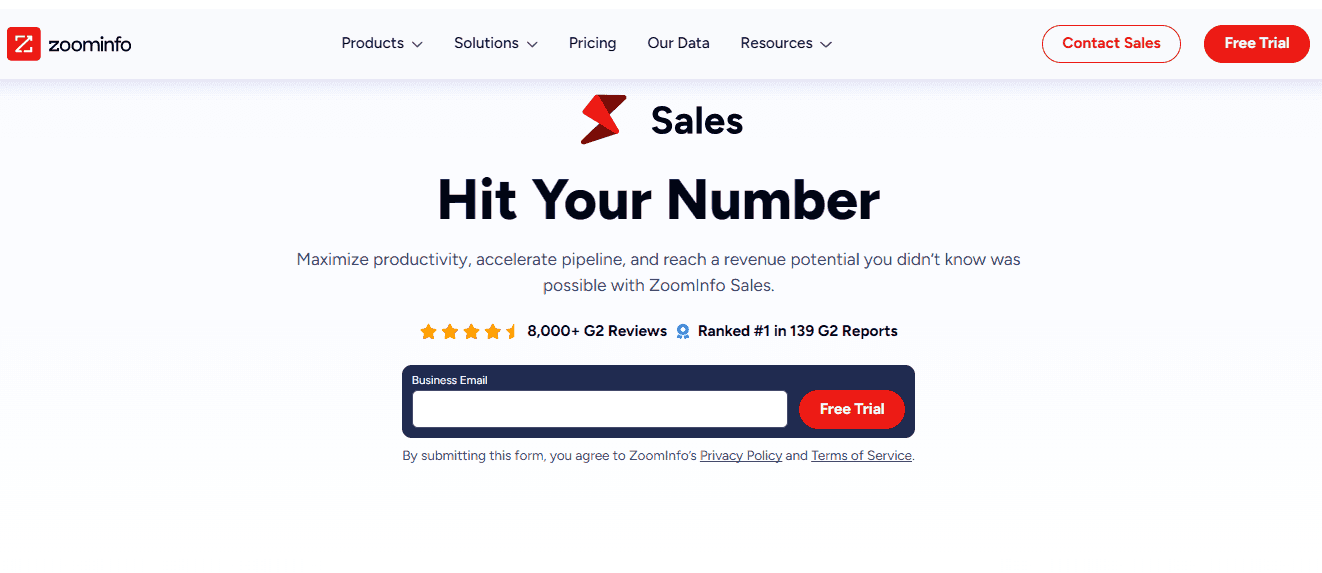
ZoomInfo’s landing page is geared toward high-velocity sales teams. A bold hero headline highlights productivity gains, supported by an always-visible “Free Trial” CTA. Feature sections are structured with visuals to break down complex capabilities like lead scoring. Ratings, awards, and case studies reinforce trust and expertise.
What works:
• Hero with strong outcome-focused messaging
• Feature blocks that explain complex tools simply
• Heavy use of social proof to build credibility
20. Dropbox
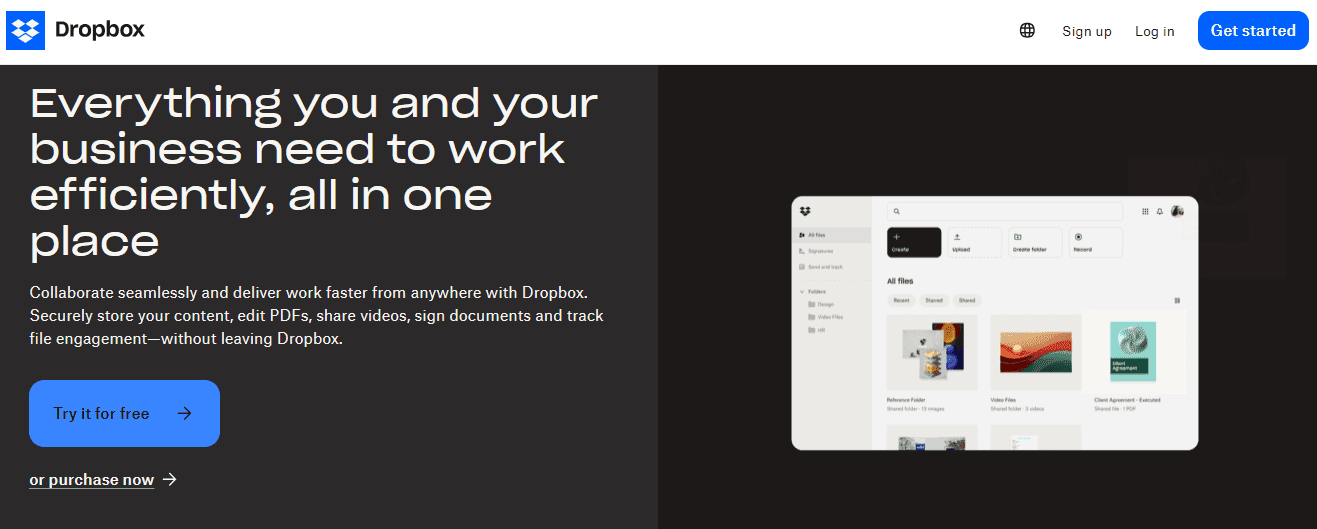
Dropbox takes a minimalist approach without losing substance. A crisp hero video demonstrates real-world workflows, while the rest of the page uses large visuals and tight copy to communicate collaboration benefits. The design stays clean and distraction-free, making the value clear within seconds.
What works:
Simple, calm layout that’s easy to digest
Large, clear CTAs for quick decision-making •]
Testimonials to reinforce trust and reliability
Best practices for saas landing pages
Simple principles separate normal landing pages from great SaaS landing pages. What are those? Read further.
Best practice 1: Obsess over a single, specific goal
Every element must serve the primary conversion goal. Is it a free trial sign-up? A demo request? An ebook download? If an element doesn’t support that goal, remove it.
Actionable step: Write the goal at the top of your design document. For every section you add, ask: 'How does this directly persuade the visitor to [take my goal action]?' Navigation links to your blog or careers page are also classic distractions. Remove the main navigation menu entirely for pure landing pages.
Best practice 2: Write headlines for your visitor, not your ego
Your headline should instantly display the visitor’s desired outcome, not your company’s mission statement.
Mistake: 'Welcome to Acme Corp: Revolutionizing B2B Synergy.'
Fix: 'Automate Your Client Reporting and Win Back 10 Hours a Week.' See the difference? The second speaks directly to a pain point (time-consuming reports) and a clear benefit (10 hours saved).
Best practice 3: Design for the 'f-pattern' scan
Eye-tracking studies show web users read in an 'F' pattern: across the top, down the left side, and across again mid-way. Structure your page accordingly.
Actionable step: Place your most critical elements (headline, key benefit bullets, primary CTA) along this F-path. Use clear, bold sub-headers (H2, H3 tags) as anchor points for scanners.
Best practice 4: Use social proof strategically, not decoratively
Logos and testimonials lose power if they feel random.
Mistake: A generic 'As seen in' banner with irrelevant publications.
Fix: Segment your proof. Place a 'Trusted by innovative teams' logo bar near the top. Place a testimonial about 'ease of use' next to your setup tutorial. Place a case study on 'ROI' near your pricing. Context is key.
Best practice 5: Optimize your forms ruthlessly
Every additional field in a form increases friction. A study by HubSpot found that reducing form fields from 4 to 3 can increase conversion rates by 50%!
Actionable step: For a free trial, ask for the absolute minimum: often just email and password. You can collect more details later, inside the app. Use smart, progressive profiling over time.
Did you know? Per a study, for each additional field you add to your form, the conversion rate can drop from 8%-50%! |
Best practice 6: Embrace video and interactive elements
A well-made explainer video on your hero section can dramatically increase engagement and conversions. Wyzowl’s 2023 survey states that 90% of marketers say video has increased website traffic.
Actionable step: Don’t just do a screen recording. Structure it as a mini-story: 1) The problem your viewer feels, 2) How your product is the solution, 3) A quick glimpse of the 'aha!' moment inside the app, 4) A clear CTA to experience it themselves.
Best practice 7: Implement personalization where possible
Use the referral source to tailor the message. A visitor from a Google Ads search for 'best CRM for small business' should see a slightly different headline than one from a Facebook ad about 'managing sales contacts.'
Actionable step: Use tools that allow for dynamic text replacement (DTR). The headline could read, 'Welcome, small business owner! The CRM built for teams under 50.'
Best practice 8: test, measure, and iterate (always)
Your first version is a hypothesis. A/B testing is the experiment that proves it.
Actionable step: Start with high-impact elements: Headline, Primary CTA button color/copy, hero image/video. Tools like Google Optimize or dedicated platforms like Fibr AI make this accessible. But do keep in mind that A/B testing can be futile unless you have a minimum of 25,000 visitors.
Common mistakes to avoid when designing SaaS landing pages
Knowing what to do is half the battle. Knowing what not to do can save you months of poor performance.
Vague, 'clever' headlines: Don’t ask the visitor to decode your value. 'Unleash Synergy' means nothing. 'Close Deals 30% Faster' means everything. The right headline can in fact boost your conversion above 300%!
Weak, passive CTA copy: Buttons that say 'Learn More' or 'Submit' are conversion killers. They don’t tell the user what happens next. Always use first-person, action-oriented language.
Wall of text syndrome: Long, unbroken paragraphs are the enemy of conversion. Use whitespace, images, bullet points, and subheaders to create visual breathing room.
Generic stock photography: Photos of people in suits shaking hands or women laughing at salads scream 'inauthentic.' Use authentic screenshots, diagrams, or custom illustrations that reflect your actual product and users.
Ignoring mobile experience: Over 50% of web traffic is mobile. If your landing page is difficult to read or your CTA button is tiny on a phone, you’re losing half your potential conversions. Design mobile-first.
Lack of clear proof: Making bold claims ('The #1 Platform!') without any supporting evidence (logos, testimonials, data points) makes your page feel like an empty sales pitch.
Complex, lengthy forms: Asking for a phone number, company size, and role on a first-time free trial sign-up is a huge barrier. Keep it minimal.
Not testing anything: Assuming your first draft is perfect is the biggest mistake of all. Without A/B testing, you’re relying on guesswork and leaving money on the table.
🙂Fun Fact: A landing page that loads in 1 second has a conversion rate that’s 3X higher than pages loading at 5 seconds. |
How Fibr AI is addressing the SaaS landing page gap?
Building a high-converting, great SaaS landing page isn’t about chasing the latest design trend or using the buzziest buzzwords. It’s all about clarity and human psychology. It’s about understanding that your visitor arrives with one question: 'Can this solve my problem?' Your page’s sole job is to answer 'Yes, and here’s the proof' in the most direct, trustworthy, and frictionless way possible.
But what if your page itself could do more than just answer that question? What if it could understand who was asking?
Today’s visitors arrive from ads, social feeds, and increasingly, AI agents. Serving everyone the same static page is a missed opportunity.
This is the gap Fibr AI addresses. Rather than a fixed page, imagine a landing surface that adapts. It identifies who or what is visiting and shifts its messaging, layout, and offers in that moment. It’s a living layer that learns from every click, turning insight into immediate optimization.
See what it means for your campaigns when your landing pages can think for themselves. Book a demo with Fibr AI today.
FAQs
What makes a landing page one of the best SaaS landing pages?
A great SaaS landing page tells visitors what the product does in seconds. The headline is clear, the value is direct, and the CTA stands out. The page has simple messaging, social proof, a clean layout, and one clear action. No confusion. No long explanations. The visitor should know: 'What is this? Who is it for? Why should I care?'
What are some of the best SaaS landing page examples for 2025?
Pages that are performing well in 2025 focus on clarity, trust, and speed. You’ll see bold messaging, real screenshots, customer quotes, case-study metrics, and short CTAs. Best SaaS landing page xamples often include platforms like Notion, ClickUp, Figma, Slack, and more because they balance simple design with strong messaging and proof of value.
What key elements should every top SaaS landing page include?
The most effective SaaS landing pages usually include: a strong headline, sub-headline, visible CTA, quick product overview, benefits (not features), client logos, reviews or testimonials, and a short visual demo or product screenshot. These elements help visitors feel confident and ready to take action.
How do I increase conversions on my SaaS landing page?
Start by matching your copy to your user’s pain point. Keep the layout simple and remove distractions. Use one main CTA and repeat it across the page. Add proof: star ratings, case studies, screenshots, or before-and-after value. Test headlines, CTAs, pricing placement, and visuals. Small changes can increase conversions faster than big redesigns.
Should I use a template or build a custom layout for my SaaS landing page?
Templates are a good choice if speed and cost matter. Many successful early-stage SaaS products launch with a template and refine later. A custom layout makes sense once positioning is clear and the product has traction. Both can convert well; remember, the message matters more than the layout style.
How do I make my SaaS landing page stand out from similar products?
Focus on positioning, not just design. Make your headline specific and tie it to a clear outcome your competitors don’t claim. Use real product visuals, real testimonials, and real use cases. Speak directly to one audience instead of everyone. When the message feels personal and clear, the page stands out and converts more visitors into sign-ups or demos.
About the author




















